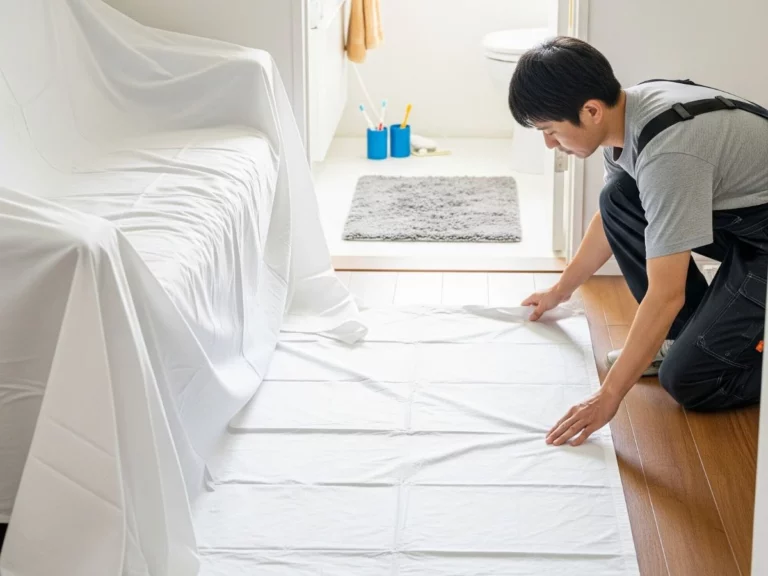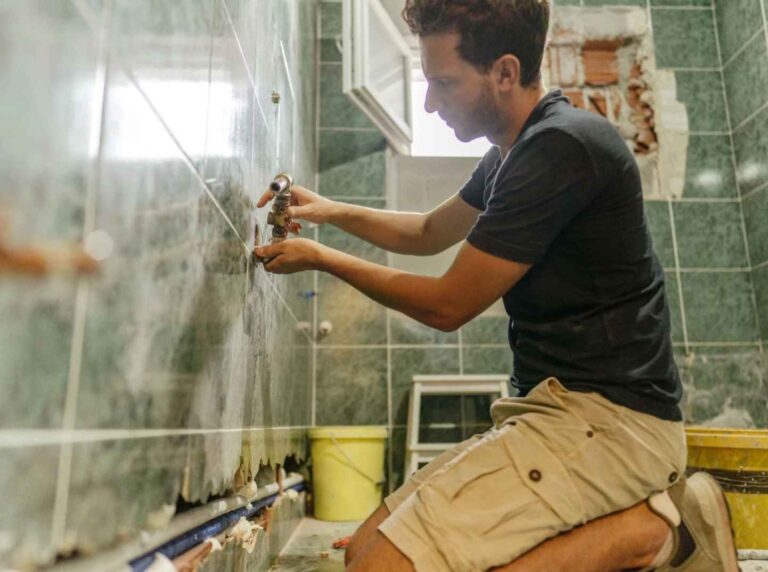As a professional bathroom installer, I’ve seen it all – from stunning, successful renovations to projects where the flooring simply wasn’t up to the job. One of the most common questions I get asked is about the best type of flooring for a new bathroom.
While you might have heard about AC5 laminate flooring for bathrooms, often praised for its durability, it’s crucial to understand the full picture, especially when it comes to moisture and long-term performance. It’s also important to understand the different products on the market to find the perfect flooring for your needs.
Let’s break down why an AC4 or AC5 laminate might be an option, but why I usually recommend a more durable, truly waterproof alternative like Luxury Vinyl Tile (LVT) for my clients’ peace of mind. Getting the flooring right is a critical step in any home renovation.
Understanding AC Ratings: A Quick Guide to Laminate Durability
The “AC” in AC rating stands for Abrasion Class, and it’s a grading system that tells us how durable a laminate floor is. Developed by the European Producers of Laminate Flooring (EPLF), this rating is all about a floor’s ability to resist wear and tear from foot traffic, scratches, and impacts. The ratings range from AC1 (light residential use) to AC5 (heavy commercial use).
- AC1-AC3: Generally used for low-traffic areas like bedrooms or offices. Not something I’d ever consider for a bathroom.
- AC4: A more robust option suitable for high-traffic residential areas like hallways and kitchens.
- AC5: The most durable option for residential use, designed to withstand heavy foot traffic and more demanding environments.
When a manufacturer says a laminate floor is “AC5 rated,” they are confirming its strength and longevity, but this rating doesn’t necessarily mean it’s waterproof. This is a common point of confusion for anyone considering water resistant laminate flooring for a high-moisture environment.
The Moisture Misconception: Water-Resistant vs. Waterproof
This is the most critical point to understand when looking at flooring options suitable for bathrooms. When you hear about waterproof laminate flooring, you must be cautious.
- Water-Resistant Laminate: This means the material can handle small spills and splashes without immediate damage. The top layer (the wear layer) is designed to repel moisture, so if you spill a glass of water and wipe it up quickly, you’ll be fine. However, if water gets through the seams or sits on the surface for an extended period, it can cause the core of the laminate to swell, warp, and be permanently damaged. This is a crucial distinction for room suitability.
- Waterproof Bathroom Flooring: This is a different beast entirely. A truly waterproof floor, like LVT, is constructed from materials that are impervious to water. You could have a bath overflow or a leak from a toilet, and the flooring itself would remain unharmed. The materials simply do not absorb or react to moisture.
While many high-quality AC4 or AC5 laminates are advertised as water-resistant, they are not waterproof. They can handle the occasional splash from the sink or shower, but they are vulnerable to standing water, which is a real risk in any bathroom. A simple leak or a puddle left after a child’s bath could lead to a costly replacement down the line.
When is Bathroom Laminate Flooring a Reasonable Choice?
I’ve installed AC5 laminate in bathrooms before, but only under very specific circumstances. It can be a good option if:
- You’re on a very tight budget: AC5 laminate is typically more affordable than LVT, and if every penny counts, it can be a way to achieve a durable, attractive floor without breaking the bank.
- It’s for a low-use bathroom: For a guest toilet or a small powder room that sees very little moisture, AC5 laminate can be perfectly adequate.
- You’re willing to take a risk: For many people, the potential for water damage is not worth the stress.
Even in these scenarios, I make sure my clients fully understand the risks. I always recommend using a good quality underlay and sealant around the edges to minimize the chance of water getting through the joints.
Considering Similar Products: The LVT Advantage
When we’re designing custom bathroom packages for our clients, I recommend spending a little extra for LVT. Here’s why it’s a better long-term investment.
Truly Waterproof for Bathroom Environments
LVT is made from multiple layers of PVC and other materials, like SPC, making it 100% waterproof. You can spill, splash, and even have a minor flood, and the flooring will be fine.
Unmatched Durability
It’s tough as nails. LVT is highly resistant to scratches, dents, and scuffs. It’s built to handle daily use in a busy family bathroom for years without showing signs of wear.
A Wide Range of Options
LVT has evolved significantly over the years and now comes in a huge range of designs that mimic natural wood flooring, traditional tiles, and even herringbone laminate patterns. You can find everything from a light grey to a rich acacia brown oak. The visuals are incredibly convincing, and the texture adds to the authenticity.
Added Comfort
LVT is warmer underfoot than stone or traditional tiles and often has a slightly softer feel, which can be a small but welcome comfort in a bathroom.
The Cost-Benefit of Waterproof Options
While the initial cost of LVT might be slightly higher than AC5 laminate, the long-term value is undeniable. The peace of mind that comes with knowing your floor is completely waterproof in a high-moisture environment is, in my professional opinion, worth every penny. You won’t have to worry about a leaking sink or a dropped shampoo bottle causing permanent damage. When you consider the cost of replacing damaged flooring, the waterproof floor truly offers better value.
Popular Style Choices for Your Home
For those drawn to the aesthetic of wood flooring or natural oak, there are fantastic LVT products that perfectly replicate these looks. If you prefer the look of stone or ceramic, a tile effect laminate flooring or LVT is a popular choice. The possibilities are vast, from a sleek grey laminate to a classic keswick medium oak or even a modern hayfield grey oak.
Ultimately, the choice is yours, but as a professional installer, my advice is always to prioritise a truly waterproof solution for a space where water is an ever-present element. When it comes to bathroom flooring, durability is important, but water protection is paramount. Don’t be fooled by products that are only “resistant options” when you need a fully resistant floor.


